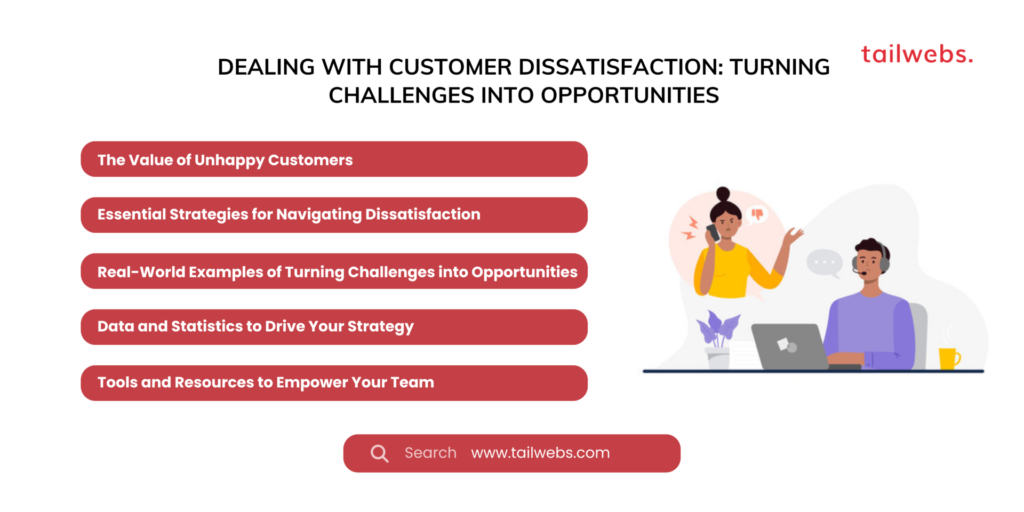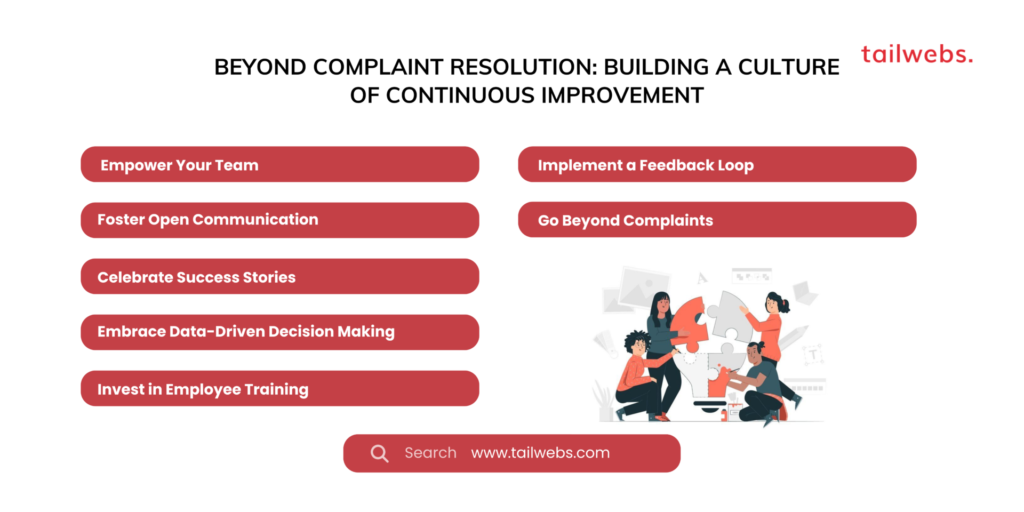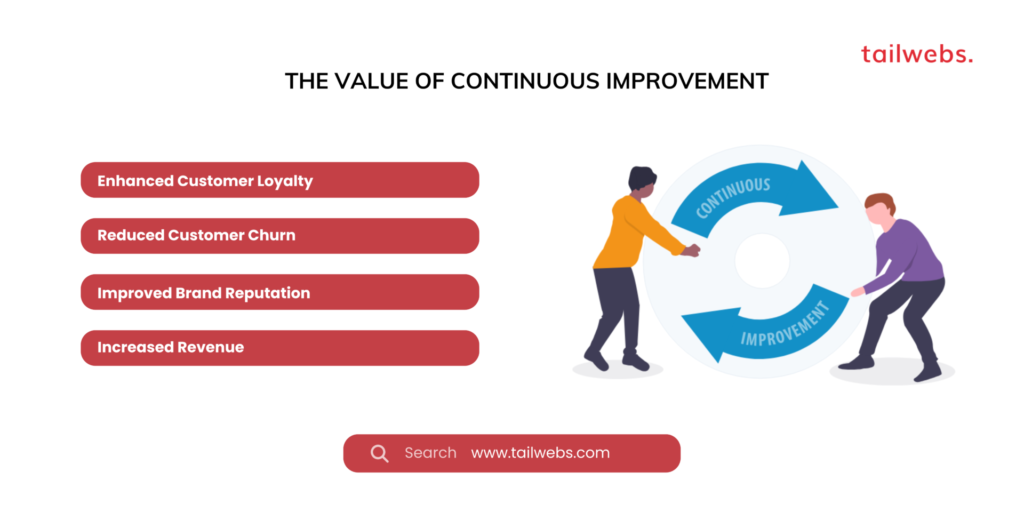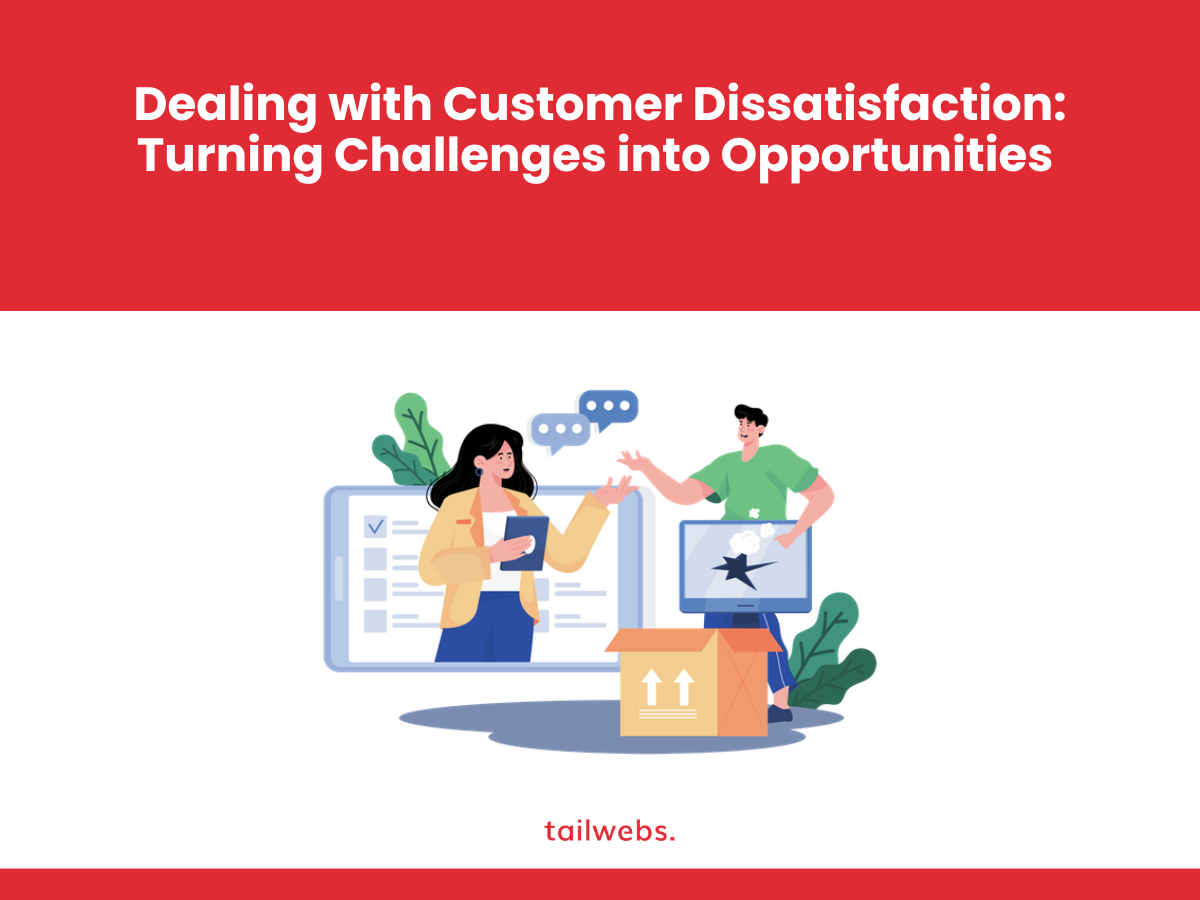A single disgruntled customer can leave a trail of negativity that spreads like wildfire in today’s digital age. In the age of online reviews and social media, negative experiences can quickly damage a brand’s reputation and erode customer loyalty. However, what if we reframed customer dissatisfaction as an opportunity for growth and improvement?
This blog post explores how businesses can transform those frowns upside down by effectively handling customer complaints and turning them into valuable opportunities. We’ll delve into practical strategies, insightful statistics, and real-world examples to equip you with the tools to navigate the choppy waters of customer dissatisfaction and emerge as a brand that thrives on feedback.
The Value of Unhappy Customers:
Before diving into specific strategies, let’s consider the surprising value dissatisfied customers hold.
Honest Feedback:
Unlike rosy customer reviews, complaints highlight real problems and areas for improvement. They offer unfiltered insights into your product, service, or customer experience, helping you identify issues you might otherwise miss.
Strengthened Loyalty:
Studies show that customers who have a negative experience but receive a positive resolution are more likely to repurchase and become loyal advocates. Effective complaint handling can turn a one-time customer into a lifelong ambassador for your brand.
Competitive Advantage:
In a crowded marketplace, businesses that excel at customer service differentiate themselves from the competition. Demonstrating genuine care and proactive problem-solving fosters trust and customer loyalty, giving you a powerful edge.
Essential Strategies for Navigating Dissatisfaction:
Now, let’s look at specific strategies to transform customer dissatisfaction into a positive force for your business:
1. Embrace a Customer-Centric Mindset:
The first step is shifting your perspective. View customer complaints as valuable feedback, not personal attacks. Cultivate a culture of empathy and understanding within your organization, where everyone is empowered to prioritize customer satisfaction.
2. Listen Actively and Empathize:
When a customer expresses dissatisfaction, don’t interrupt or jump to conclusions. Actively listen to their concerns, ask clarifying questions, and acknowledge their feelings with genuine empathy. Remember, it’s not about winning an argument; it’s about understanding their perspective and finding a solution together.
3. Own the Problem and Apologize:
Take responsibility for the situation, even if the fault doesn’t lie entirely with you. A sincere apology goes a long way in building trust and demonstrating your commitment to resolving the issue.
4. Offer a Prompt and Proactive Solution:
Don’t make the customer wait or jump through hoops. Offer a fair and timely solution that addresses their specific concerns. Think outside the box and go the extra mile to exceed their expectations. This could involve a refund, replacement, additional service, or simply a heartfelt gesture of goodwill.
5. Communicate Effectively and Keep Them Informed:
Keep the customer informed about the progress towards resolving their issue. Transparent communication builds trust and shows the customer that you’re actively working on a solution.
6. Follow Up and Seek Feedback:
Once the issue is resolved, reach out to the customer and ask for their feedback. This shows you care about their experience and are open to continuous improvement.
7. Analyze the Feedback and Improve:
Don’t let valuable feedback go to waste. Analyze complaints to identify recurring issues and implement improvements to prevent similar situations in the future. Track your progress and share success stories within your organization to reinforce the importance of customer-centric practices.
Real-World Examples of Turning Challenges into Opportunities:
To illustrate the power of this approach, let’s look at some inspiring examples of companies that transformed customer dissatisfaction into success stories:
Zappos:
This online shoe retailer is famous for its exceptional customer service. Once, a customer lost a single shoe while traveling. Zappos not only sent a replacement pair but also a bouquet of flowers and a handwritten apology. This act of going above and beyond turned a disappointed customer into a loyal brand advocate.
JetBlue:
When a major snowstorm caused widespread flight cancellations, JetBlue took a proactive approach. They kept passengers informed, provided them with food and accommodations, and even turned the situation into a positive PR opportunity by offering stranded passengers free pizza at a local airport. This transparent and empathetic approach earned them praise from customers and the media.
Airbnb:
When a guest had a negative experience with a host, Airbnb stepped in to find them a new accommodation and offered a full refund. They also followed up with the host to provide feedback and help them improve their hosting practices. This proactive approach showed both the guest and the host that Airbnb was committed to ensuring a positive experience for everyone.
Data and Statistics to Drive Your Strategy:
The power of dissatisfied customers goes beyond anecdotal evidence. Statistics paint a clear picture of the potential return on investment in handling complaints effectively:
- 71% of consumers who have a positive resolution to a complaint increase their spending with the company. (Dimensional Research)
- 84% of consumers will tell at least 6 people about a bad experience, while only 6% will tell 6 people about a positive experience. (Tellwut)
- 46% of unhappy customers leave without telling the business why. (The Center for Complaint Studies)
These numbers highlight the importance of not only proactively resolving complaints but also encouraging customers to voice their concerns. By fostering an open and honest dialogue, you can gather valuable feedback, prevent future issues, and turn dissatisfied customers into your biggest assets.
Tools and Resources to Empower Your Team:
Equipping your team with the right tools and resources is essential for successfully navigating customer dissatisfaction. Consider implementing the following:
- A customer relationship management (CRM) system: A CRM system allows you to track customer interactions, record complaints, and monitor the resolution process. This ensures consistency and accountability while providing valuable data for analysing trends and identifying areas for improvement.
- Customer satisfaction surveys: Regularly gather feedback through surveys and polls to gauge overall customer sentiment and identify specific areas of concern. This proactive approach helps you address issues before they snowball into major complaints.
- Internal training programs: Train your team on effective communication skills, empathy building, and problem-solving techniques. This empowers them to handle difficult situations confidently and turn challenges into opportunities.

Conclusion:
Customer dissatisfaction is inevitable, but it doesn’t have to be a negative force. By embracing a customer-centric mindset, employing effective communication strategies, and continuously seeking feedback, you can transform challenges into opportunities for growth and strengthen your brand’s reputation. Remember, a dissatisfied customer is a chance to learn, improve, and ultimately build stronger relationships that drive long-term loyalty and success.
This blog post has provided you with the tools and insights to navigate the murky waters of customer dissatisfaction. Now, it’s your turn to put these strategies into action and turn frowns upside down, one happy customer at a time.
Beyond Complaint Resolution: Building a Culture of Continuous Improvement
While resolving individual complaints is crucial, truly turning dissatisfaction into opportunity requires going beyond immediate fixes. Embracing a culture of continuous improvement ensures you learn from every interaction, preventing similar issues and proactively enhancing the customer experience. Here’s how to foster this transformative approach:
1. Empower Your Team:
Equip your team with the authority and resources to make customer-centric decisions without getting bogged down in bureaucratic approvals. This empowers them to go the extra mile and find creative solutions in real-time.
2. Foster Open Communication:
Encourage feedback from all levels within your organization, including frontline employees who interact directly with customers. Their insights are invaluable for identifying and addressing pain points before they escalate.
3. Celebrate Success Stories:
Share stories of exceptional customer service within your organization to inspire others and reinforce the importance of going above and beyond. This keeps customer-centricity at the forefront of everyone’s mind.
4. Embrace Data-Driven Decision Making:
Track customer feedback, complaint trends, and satisfaction metrics to identify patterns and areas for improvement. Leverage this data to inform strategic decisions and prioritize initiatives that maximise customer satisfaction.
5. Invest in Employee Training:
Ongoing training on empathy, communication, and problem-solving equips your team with the skills needed to navigate difficult situations and turn complaints into positive experiences.
6. Implement a Feedback Loop:
Create a closed-loop system where customer feedback is shared with the relevant departments, who then implement solutions and report back to the customer. This demonstrates transparency and commitment to their feedback.
7. Go Beyond Complaints:
Actively solicit customer feedback through surveys, focus groups, and social media engagement. This proactive approach helps you identify opportunities to enhance your products, services, and overall customer experience.

Case Study: Ritz-Carlton’s Legendary Service:
The Ritz-Carlton is renowned for its exceptional customer service, built on a culture of continuous improvement. Their motto, “We are ladies and gentlemen serving ladies and gentlemen,” empowers employees to personalise service and go the extra mile. When a guest once complained about a noisy hallway, the hotel not only moved them to a quieter room but also surprised them with a complimentary spa treatment, demonstrating their commitment to exceeding expectations.
The Value of Continuous Improvement:
By embracing continuous improvement, you don’t just resolve complaints; you proactively prevent them by anticipating customer needs and exceeding expectations. This translates to:
Enhanced Customer Loyalty:
Happy customers become loyal brand advocates, driving positive word-of-mouth and repeat business.
Reduced Customer Churn:
Proactive problem-solving helps retain customers by demonstrating your commitment to their satisfaction.
Improved Brand Reputation:
Positive customer experiences boost your brand image and make it easier to attract new customers.
Increased Revenue:
Satisfied customers spend more and are more likely to try new products and services.

Conclusion:
Turning customer dissatisfaction into opportunity isn’t just about resolving complaints; it’s about fostering a culture of continuous improvement that prioritizes customer needs at every level. By empowering your team, embracing feedback, and proactively seeking ways to enhance the customer experience, you can transform challenges into catalysts for growth and build a brand that thrives on positive customer relationships. Remember, in today’s competitive landscape, it’s not enough to simply satisfy customers; you must continuously strive to delight them.





